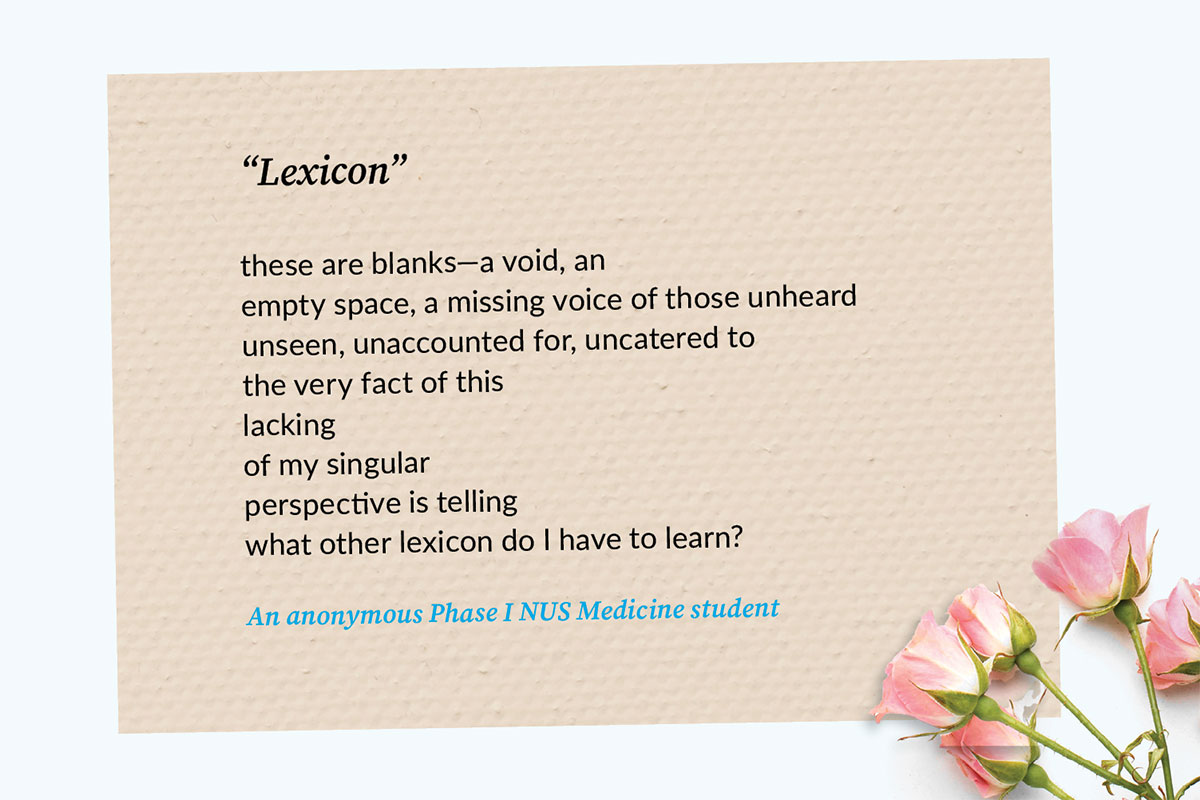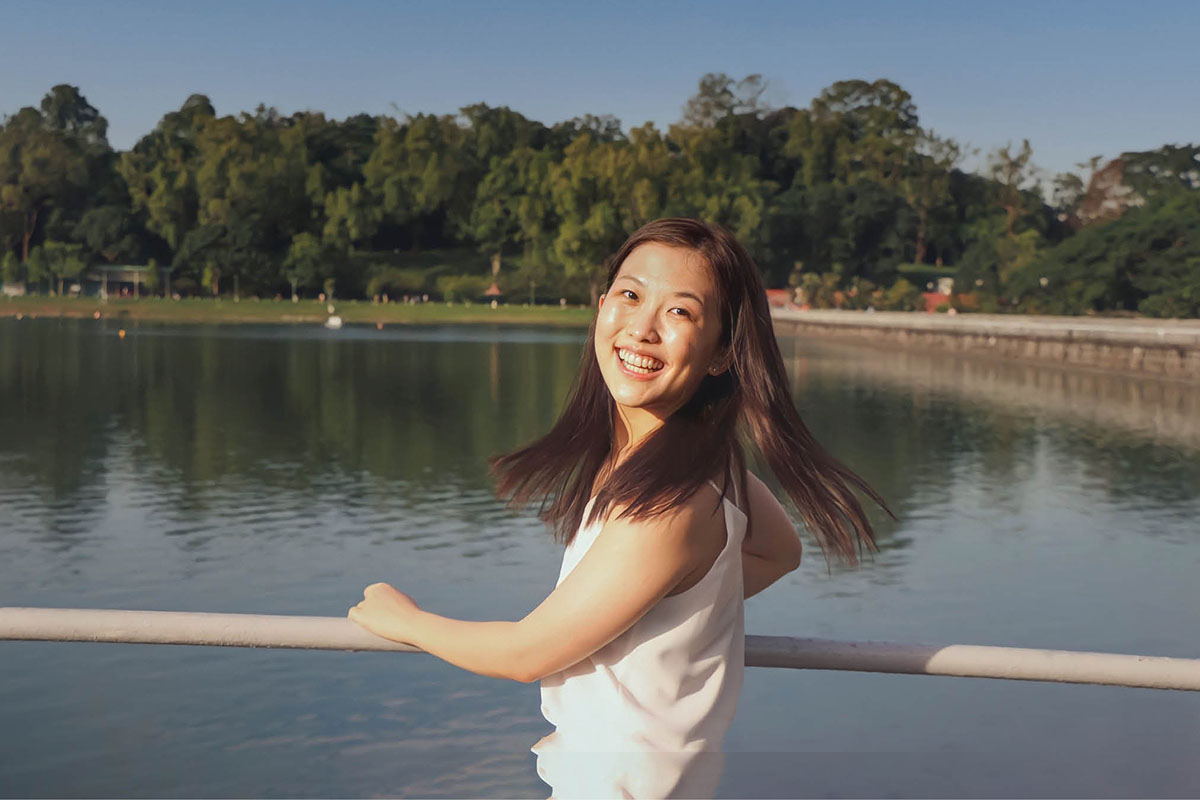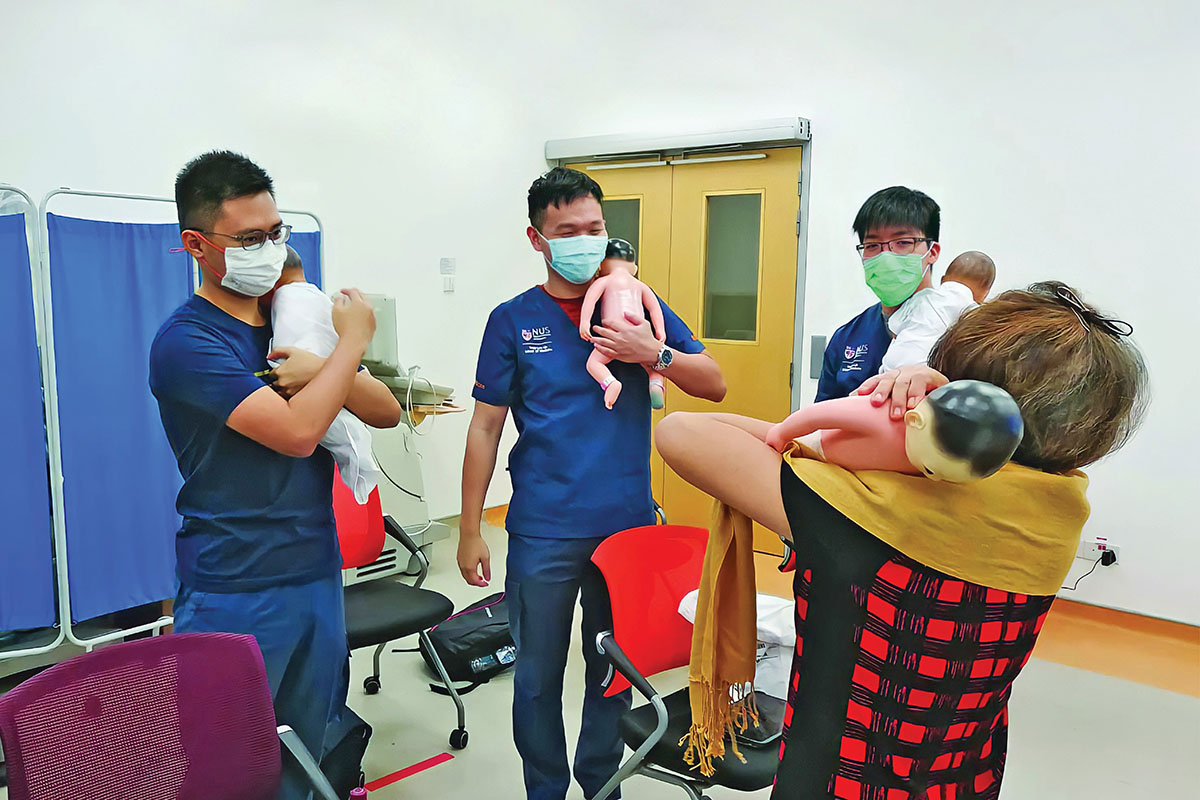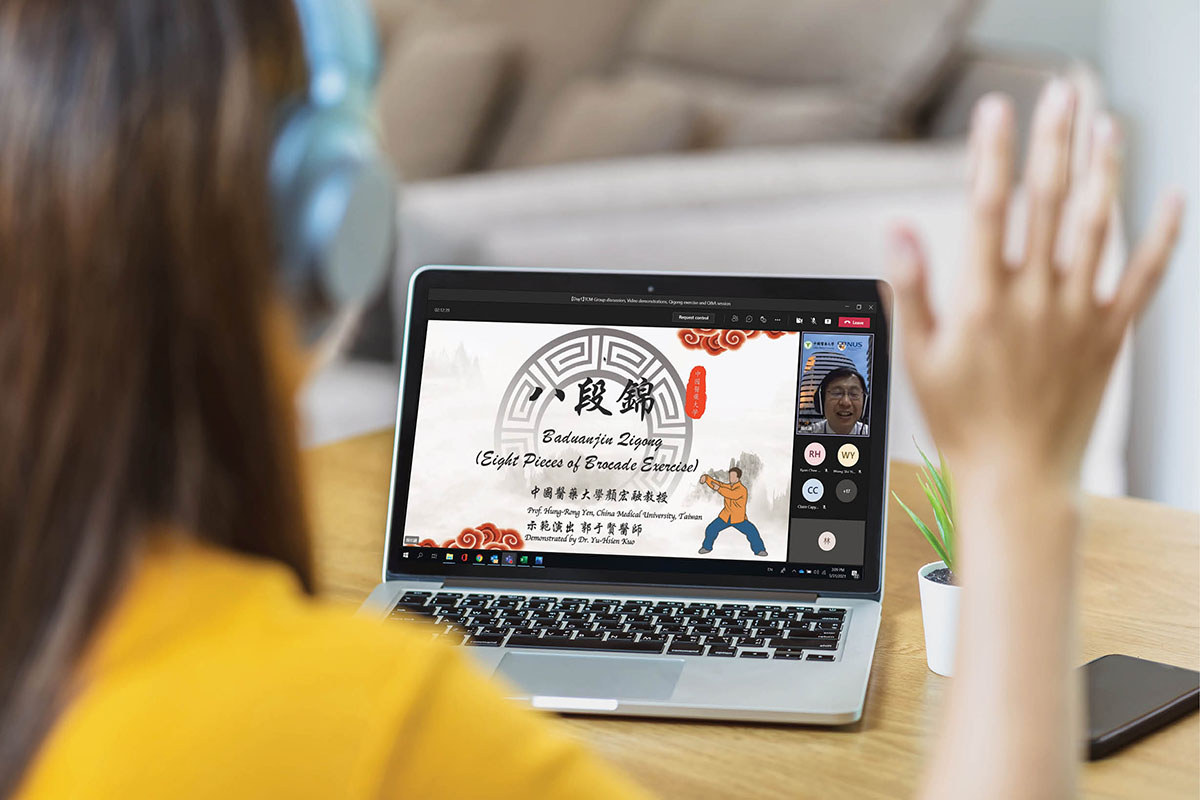
Issue 40 / November 2021
All in the Family
Becoming and Being:
Learning to Come Alongside Communities in Need

The Health and Humanity Pathway summer school was conducted over a period of three weeks from May to June 2021. The aims of the summer school were to inspire students to come alongside vulnerable communities to serve them from a place of compassion.
o meet the aim of the summer school programme, teaching and learning activities were delivered with two broad overarching learning objectives: to learn more about the needs and challenges faced by individuals in need from a ground-up, real-world perspective, as well as to nurture an attitude of service within the participants. A total of 44 students participated including a mixture of students from NUS Medicine Phase I to Phase III, and the Yale-NUS and University Scholars Programme.
The summer school adopted a novel conceptual framework for curriculum design of ‘A Camino to Serve’. This framework used the concept of ‘Camino’ (journey) in a dual process of the external journey and the internal journey of service. In the external journey, students are guided to see the world from the lens of persons in need and are equipped with knowledge to serve. In the internal journey, students are guided through reflective processes to deepen self-awareness and compassion as an attitude of service.
Learning with guidance
The learning within the Camino is facilitated through ‘guides’ who come alongside students to act as mentors, companions and role models, sharing their lives with students through mentoring interactions. ‘Camino guides’ included faculty from both the medical sciences, clinical departments, social service organisations and student advisors from student affairs. During each teaching and learning activity, a team of faculty staff members was present to inspire lively dialogue and discussion, thus socialising students into the values of serving leadership.
“The internal journey placed an emphasis on becoming serving leaders not through merely ‘doing’ but also through one’s way of ‘being’. To facilitate this goal, the three-week summer school started and ended with sessions which focused on self-awareness and self-discovery using reflective spaces and the medical humanities.”
The external journey to develop knowledge and skills to serve those in need addressed topics of disability, physical poverty, inequality, women-at-risk, vulnerable elderly and youth facing adversity. These topics were taught daily—learning began with ‘Living Conversations’ session, where a teaching and learning activity highlights the patient’s voice expressed through dialogue sessions with an emphasis on the patient’s narrative. This was followed by ‘Getting Real’ case-based discussions where students worked hand-in-hand with faculty staff to discuss real-life case scenarios and were challenged to demonstrate perspective-taking and practical problem-solving skills in a community-centric, multidisciplinary manner. Through the case-based discussion, students had the opportunity to learn from other members of the multidisciplinary team including social workers, counsellors, key leaders of the social service sector.
Joining the dots: medicine, the humanities and self-reflection
Last, but not least, the learning for each day’s topic was developed further by broadening the students’ mindsets and paradigms through an interdisciplinary symposium, including keynote speakers from diverse backgrounds spanning anthropology, medical ethics, psychology, family medicine, and public health. The panel discussions allowed students to appreciate how problems faced by patients are addressed at multiple levels, within the healthcare system’s context of society with its rules and norms, as well as from the global health perspective.
The internal journey placed an emphasis on becoming serving leaders not through merely ‘doing’ but also through one’s way of ‘being’. To facilitate this goal, the three-week summer school started and ended with sessions which focused on self-awareness and self-discovery using reflective spaces and the medical humanities. Some of these sessions included ‘The Power of Story’, a workshop led by Dr Anita Lim which impressed on students the need to honour the narratives of those they serve, as well as their own journeys and narratives even as they serve others. Another keynote event was two pairs of full day workshops held in the middle of the summer school, titled ‘To See the Suffering’ and ‘To Be with Suffering’, where Dr Maleena Suppiah used various creative art forms to facilitate compassion training in students anchored on serving the communities in need. To nurture a sense of community and weave a sense of belonging anchored on meaning and purpose, each day of summer school learning started with ‘Arrival’ and ended with ‘Safe Spaces’ sessions facilitated by Dr Victor Loh and Dr Ann Toh, which acted as reflective spaces for students to process their learning as a community.
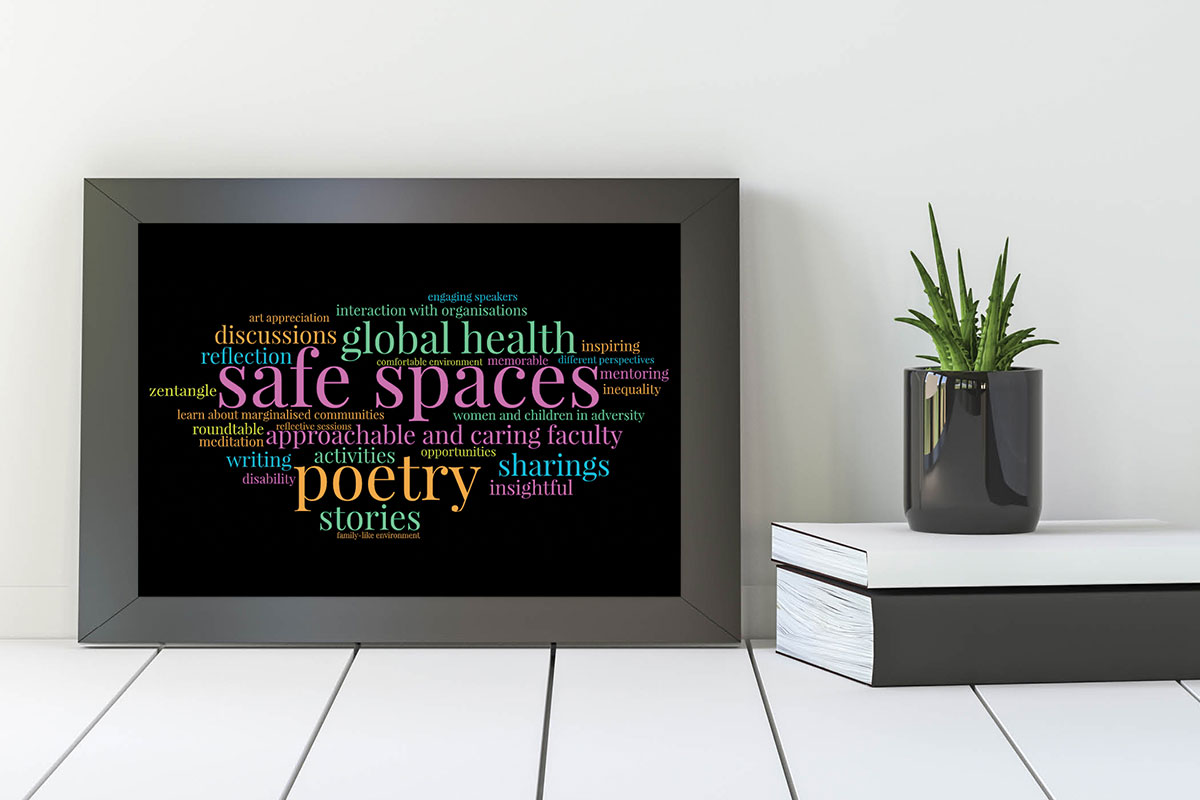
A word cloud of students’ favourite segments of the programme.
In the last three days of the summer school, students were given a choice of four workshops to attend to deepen their knowledge in areas they were drawn towards—‘Medicine for Marginalised’ Experiential Journey facilitated by Associate Professor Tan Lai Yong, ‘Serving Globally’ by Dr Pang Ning Yi and Dr Lois Hong, ‘Humanising Healthcare’ by Dr Maleena Suppiah and ‘Eudaimonia’ by Dr Ann Toh.
Students were invited to capture and crystallise the lessons learnt, through the creation of reflective pieces where they were given the option of choosing the form of expression that they were most comfortable with. These included reflective writing, photo-journaling, poetry, drawings, and paintings.
Creative responses by students
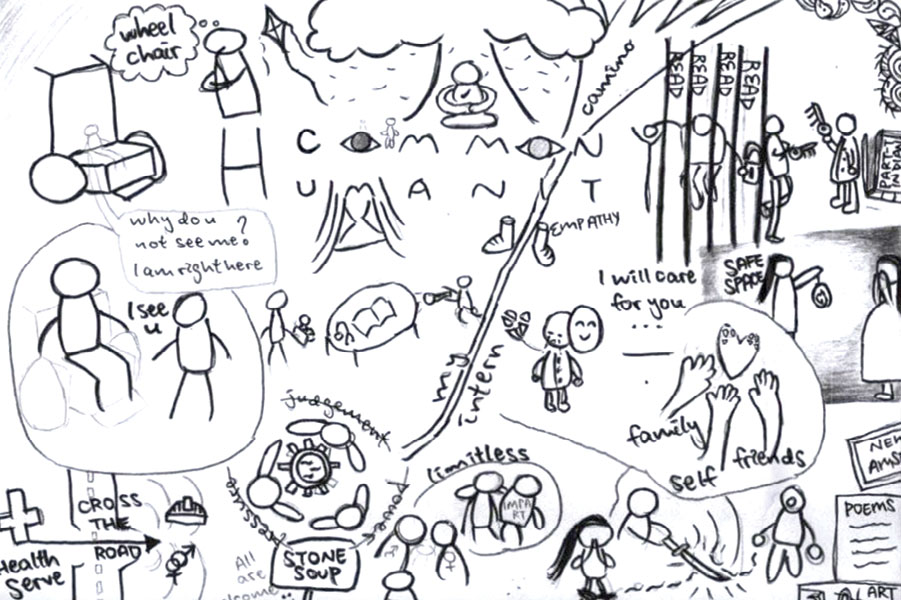
“Common Humanity” by Teo Yao Neng, Phase II NUS Medicine student
“One thing I discovered over the course of the Health and Humanity summer school was to see people in different underprivileged communities as they are, without judgement but with love, acceptance and honesty. That inspired the theme for this drawing, “Common Humanity”, which refers to the commonality that we all share as human beings. We all desire similar things—from food and shelter, to love, acceptance and belonging. And so my vision for serving vulnerable communities is to always look for the common humanity in people, to remind myself constantly that I am serving people who are human, as I am, and to always try my best to see them as they are, instead of seeing only the needs that are portrayed of their community. Recognising this commonality in any person unites all of us in this world, regardless of nationality, race, gender, socioeconomic status, occupation, language, and disposition.”
Teo Yao Neng, Phase II NUS Medicine student
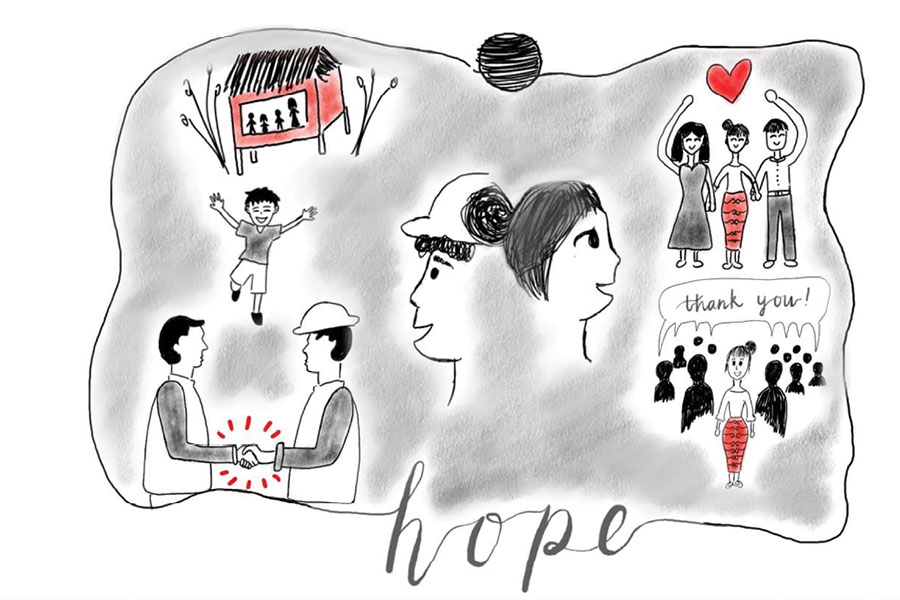
“Hope” by Elizabeth Wu, Phase I NUS Medicine student
“Entitled “Hope”, my drawing depicts two foreign workers (a construction worker and a domestic helper) looking upwards at all their dreams and wishes—pertaining to their current working situation and to their families—which are all held together by a string called hope. It sheds light on the plight of many foreign workers in our midst: All too often we forget that they are beloved and respected mothers, fathers, sons, daughters, farmers and businessmen, in their communities back home. While there is much that can be improved with regard to our response to foreign workers in our midst, this picture reminds us of the hope that we, and our foreign workers, have. I hope to tell the foreign workers to keep their heads up and not despair, for there is hope, which in time may become reality.”
Elizabeth Wu, Phase I NUS Medicine student
